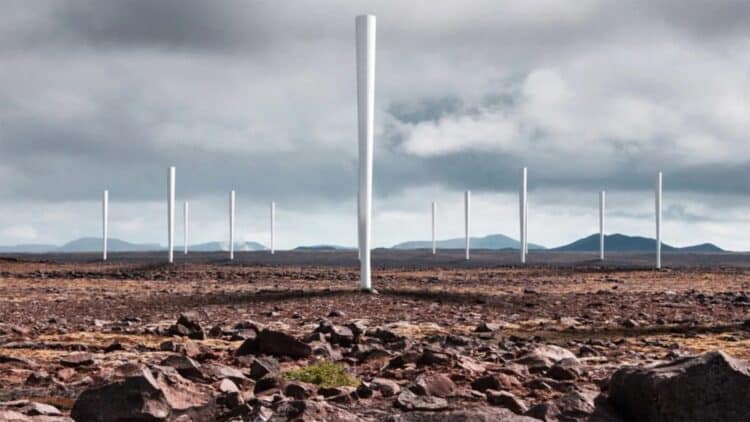Solar panels multiplying around the world, covering rooftops, farms, and entire deserts. But what if there was a new way to generate clean energy… without propellers, without noise, and without requiring much space? It sounds like science fiction, but a Spanish startup has created something that could completely change the game. A bladeless tower that doesn’t rotate, but vibrates.
A wind turbine without blades
This was made possible by Vortex Bladeless, which launched a wind turbine of the same name. Instead of giant rotating blades, it’s shaped like a cylindrical pole that sways in the wind. This swaying isn’t random, however; it’s a controlled response to a physical phenomenon called vorticity. When wind passes around the structure, it creates eddies that cause the tower to vibrate, and this vibration is converted into electrical energy.
It’s important to emphasize that we’re not talking about a theoretical prototype. This is because the technology already works in light winds (starting at 3 m/s), common in urban and rural areas. This means it can operate where traditional turbines wouldn’t even rotate. And best of all: the energy efficiency is real, with a 45% lower cost per watt generated compared to turbines with propellers.
Meet the Vortex Bladeless
We need to keep in mind that conventional turbines are powerful, but they have their side effects:
- Constant noise.
- High maintenance costs.
- And a risk to wildlife, especially birds and bats.
The Vortex solves all of this in one fell swoop. Because it has no rotating parts or exposed propellers, it’s almost completely silent (it emits sounds below 20 Hz, imperceptible to the human ear). It’s also lightweight (only 15 kg), weatherproof, and doesn’t require expensive components like nacelles or blades (very similar to this other turbine). Internal magnets prevent friction between moving parts, reducing mechanical wear and maintenance costs. In other words, it’s literally the kind of innovation we didn’t even know we needed.
“Our technology has different characteristics which can help to fill the gaps where traditional wind farms might not be appropriate. ”, says David Yáñez, the company’s founder.
Even though, Vortex itself acknowledges that, for now, its devices generate about 30% of the energy of a conventional turbine. But that’s not the point. The focus is on versatility, low cost, easy maintenance, and a minimal environmental footprint.
Small, silent, and powerful: The wind revolution is scaling down to your backyard
Today, the company works with three models at different stages of development:
- Vortex Nano: This one is only 1 meter tall and has a power output of 3 W. It may seem small, but when combined with solar panels, it becomes a powerful ally for sensors and small off-grid devices.
- Vortex Tacoma: This one is 2.75 meters tall and has a power output of 100 W, ideal for homes and small businesses. It already works in rural areas and can help entire families reduce their electricity bills.
- Vortex Grand/Atlantis: This is the giant of the moment. It measures 9 to 13 meters and can deliver up to 1 kW, enough power to support much of the electricity demand of homes or even small factories.
This shows that with this new turbine, many locations will be able to install a small structure, like the Vortex Nano, which produces energy silently, without disturbing anyone or disrupting the landscape. And that’s exactly what’s already happening: NGOs have already adopted the model because it’s “bird-friendly” and ideal for conservation areas.
And in future projects, Vortex itself plans adaptations for offshore use, with lower installation and maintenance costs than traditional offshore turbines. Essentially, Vortex aims to be the “solar panel” of wind energy, a decentralized urban solution designed for self-consumption. Now, imagine this combined with the Skybrator, which also generates 30% more energy than wind turbines.


